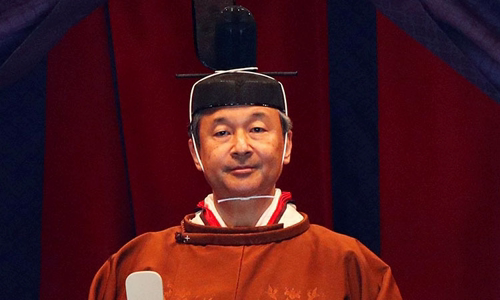Naruhito was led into a dark wooden room to perform the "Daijosai" tonight with the Sun Goddess, the last ritual marking the throne.
"Daijosai" takes place on the evening of November 14, a ritual revolving around Amaterasu Omikami, a Sun goddess that conservative views believe that gave birth to Japanese royalty. This is one of the traditional ceremonies, marking Emperor Naruhito's enthronement, after his father, Emperor Thai Emperor Akihito abdicated.

Emperor Naruhito at the coronation ceremony at the Imperial Palace, Tokyo on October 22 Photo: Reuters.
There are objections that this is a rite to reminisce the militaristic era in the past and violate the constitution of separation between government and imperial family, because of the amount of money the Japanese government has to spend on the ritual. 2.7 billion yen (US $ 25 million).
Scholars and the Japanese government deny the rumor that the "Daijosai" ritual is the Emperor's overnight stay with the Goddess of the Sun. "Basically, this ritual is a party between the goddess of the sun and the emperor," said Professor John Breen at the Center for International Studies in Japan, in Kyoto. Breen added that most Japanese coronation ceremonies have a mystical element.
At about 19h today, Emperor Naruhito will wear a white robe, enter a temple and disappear behind the white veil. The queen will accompany him here and wear a white ao dai, but do not follow the Emperor to enter the temple. In a dimly lit room, the Emperor will offer offerings, which are dishes on 32 plates of oak leaves for the Sun Goddess, before bowing his head, praying for Japanese peace.
The symbolic Emperor and Goddess will eat rice, millet and drink rice wine together until the ceremony lasts about 2.5 hours. These actions then repeat in another room of the temple and will end at around 3am the next morning.
According to Japanese researchers, Daijosai existed more than 1,000 years ago, but the current ritual dates back to the late 1800s, when Japan sought to unite the nation around the Emperor.
Koichi Shin, 60, who led a group protesting against the Daijosai ritual, said the national foundation was the reason why these people opposed the ritual. Prince Akishimo himself, the emperor's younger brother, suggested that royal funds should be used for a simpler ritual.



 MehboobAhmad
MehboobAhmad







